Ragusa has been one of the most important cities in Sicily since the native Sicels first defended their hilltop town of Hybla Heraia from the invading Greeks four millenia ago. Though successive waves of invaders and conquerors from the Arabs to the Normans left their mark on city’s cuisine and culture, it was Mother Nature who changed Ragusa’s history most dramatically.
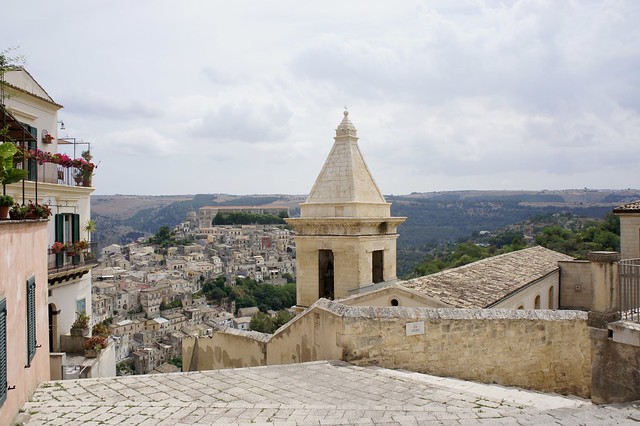
(Photo by Concierge in Umbria via Flickr)
A devastating earthquake razed most of the city center in 1693, killing thousands and destroying almost all of the historic buildings and monuments. Reconstruction began in the 1700s, and divided the city into two main sections: Ragusa Superiore, located on the higher point of the hilltop and laid out in a modern grid pattern, and Ragusa Ibla, rebuilt on top of the destroyed historic center and laid out to match the historic Medieval city plan, with its labyrinth of winding lanes and small squares. It was during this rebuilding that many of the city’s most famous and breathtaking Baroque churches and palazzi were built, and what has made Ragusa Ibla one of the most charming historic centers in Sicily and a UNESCO World Heritage Site (along with other Baroque masterpieces in the surrounding Val di Noto valley) since 2002.
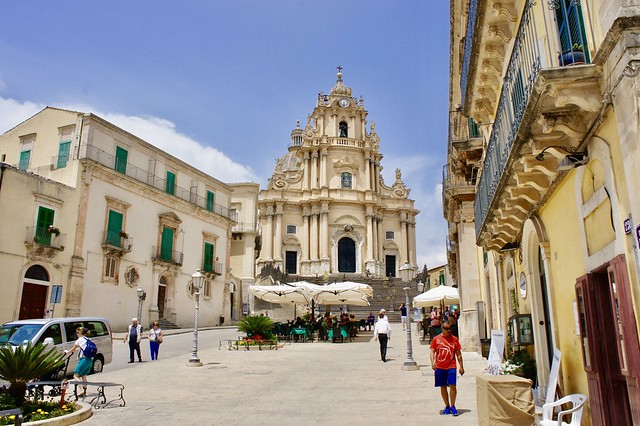
(Photo by Concierge in Umbria via Flickr)
Today, Ragusa is a vibrant city with magnificent Baroque cathedrals sitting elbow to elbow with bustling outdoor markets, cosmopolitan cafès, and sun-drenched piazzas. A number of important music and cultural festivals, landmark street art murals, and even a Michelin-starred restaurant give a sophisticated air to this friendly and welcoming Sicilian capital.
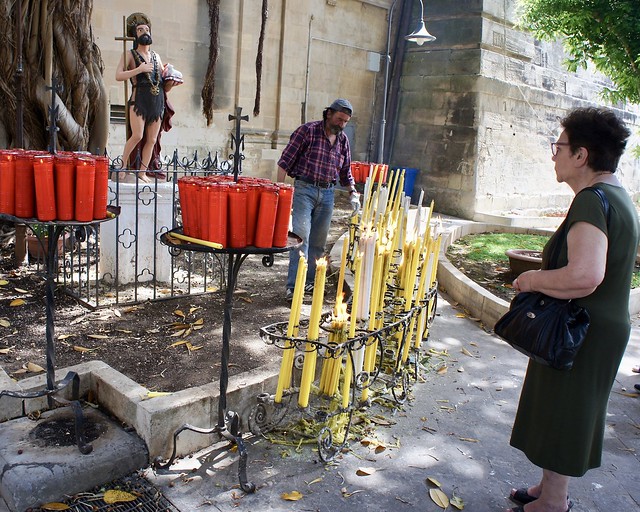
(Photo by Concierge in Umbria via Flickr)
Sights
Ragusa Ibla is known for its Baroque treasures – over 50 churches and palazzi crowded into the relatively compact quarter – and the most important sights date from the 18th century reconstruction. The crown jewel is the Duomo di San Giorgio located in Piazza Duomo. Built by Rosario Gagliardi in the mid-1700s, this Baroque masterpiece has an extravagant facade topped by a magnificent Neoclassical dome inspired by the Pantheon in Paris, and towering stained-glass windows.
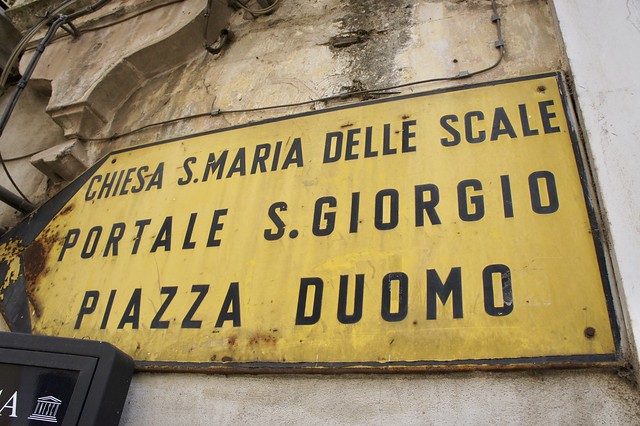
(Photo by Concierge in Umbria via Flickr)
Other Baroque churches and palazzi in Ragusa Ibla to note include Gagliardi’s ornate Church of San Giuseppe, the Church of Santa Maria dell’Itria in the historically Jewish “Cartellone” neighborhood, the Church of the Santissime Anime del Purgatorio with its Anime in Purgatorio altarpiece by Francesco Manno, and Santa Maria delle Scale along the salita commendatore, a winding staircase linking Ragusa Ibla with Ragusa Superiore, where you can take in the view overlooking the rooftops of Ibla and the surrounding countryside.

(Photo by Concierge in Umbria via Flickr)
If you need a respite from the Baroque splendor of Ibla, stop in for a stroll through the Giardino Ibleo at the eastern end of town, with its soothingly symmetrical 19th-century plan, well-tended lawns and hedges, tinkling fountains, and shady palm trees.

(Photo by Concierge in Umbria via Flickr)
Ragusa Superiore is a rather soulless, modern neighborhood with none of the charm of the warren of winding lanes and pretty piazzas of its neighboring quarter below. That said, the stately Duomo di San Giovanni Battista, built between 1718 and 1778, sits on the elegant main square and offers pretty views over the town and Val di Noto from the top of the bell tower.
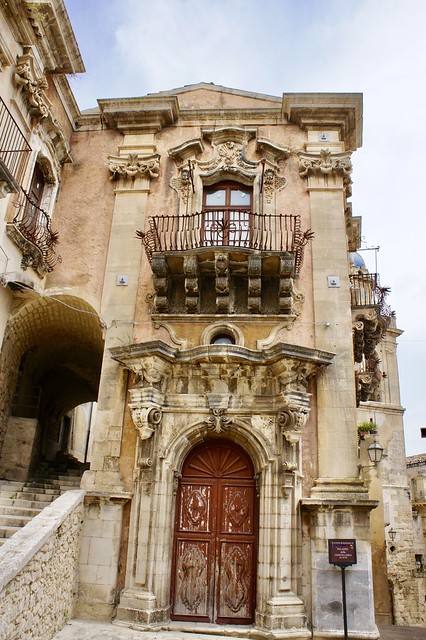
(Photo by Concierge in Umbria via Flickr)
Street Art
In a delightful jumble of old and new, Baroque beauty shares urban space with edgy street art in Ragusa, much of it commissioned murals created for the annual week-long Festiwall street art festival, held each fall in the city. You can come across many of these murals by serendipitous accident while exploring the city, but a few to seek out include Portuguese street artist Daniel Eime’s colossal mural of an elderly man on Via Ludovico Ariosto; the black-and-white mural by Italian artist “Millo” on Via Vittorio Alfieri; Pixel Pancho’s double human/robot portrait Via Archimede near the train station; Polish artist Natalia Rak’s young boy fishing from the moon near the Stadio Giovanni Biazo on Via Archimede; and Australian artist Fintan Magee’s enormous “The Gardener” in Ragusa’s Quartiere Selvaggio neighborhood.
One of the most debated murals (not least because it covers a public building) decorates the northern Via Ducezio side of the Biblioteca Muncipale (City Library) on Via Zama. The Tuscan artist Moneyless’s colorful and geometrically abstract mural is both loved and hated by locals.
Shopping
For one-stop-shopping that combines local artisans, traditional crafts, and uniquely Sicilian flavor, Le Formiche concept store (San M. Kolbe, n. 3) stocks items designed and crafted by locals, including jewelry and accessories, art, traditional puppets, natural soaps and body products, and local wines, liquors, and gourmet treats.
The more highbrow Sudestasi Contemporanea (Via Torrenuova, n. 93) art gallery tucked away in Ibla shows paintings, prints, and sculptures by contemporary Sicilian artists and the Krete Handmade Pottery Shop (Corso Venticinque Aprile, n. 94), a ten minute walk away toward the Giardino Ibleo, has a fun and whimsical selection of Sicilian pottery and ceramic art.
Dining
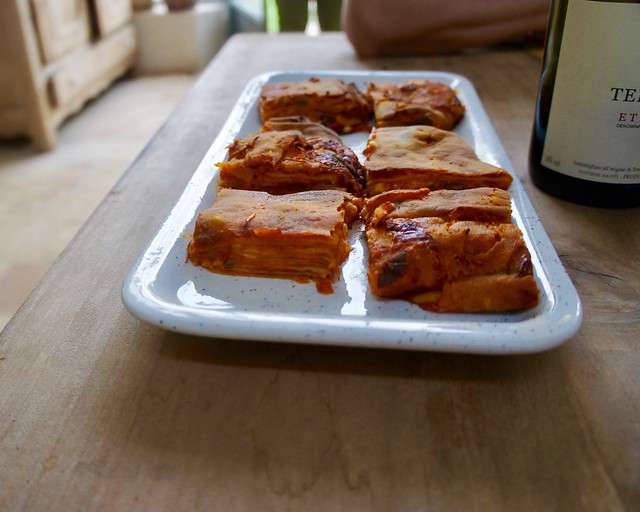
(Photo by Concierge in Umbria via Flickr)
I Banchi is a surprisingly contemporary and chic eatery headed by Michelin-star chef Ciccio Sultano. There is an in-house bakery for a casual espresso and pastry, gourmet deli counter for a made-to-order *panino* or cheese and charcuterie platter with a glass of wine, or a full menu featuring updated Sicilian dishes.
Where I Banchi is informal and cosmopolitan, Ristorante Duomo is elegant and refined. Here chef Ciccio Sultano proves his gourmet worth with an impeccable menu based on classic Sicilian ingredients and local wines. Considered one of the best restaurants in all of Sicily, this romantic warren of hushed and intimate parlors is located in the historic Palazzo La Rocca, and reservations are essential.
Ragusa is home to not one, but two Michelin-starred chefs. The rising star Vincenzo Candiano presides over Locanda Don Serafino, with its dining rooms tucked inside a number of dramatic caves that were hewn out of the bedrock under the city in centuries past to store wine and olive oil. The menu features daring reinventions of traditional Sicilian cuisine.


